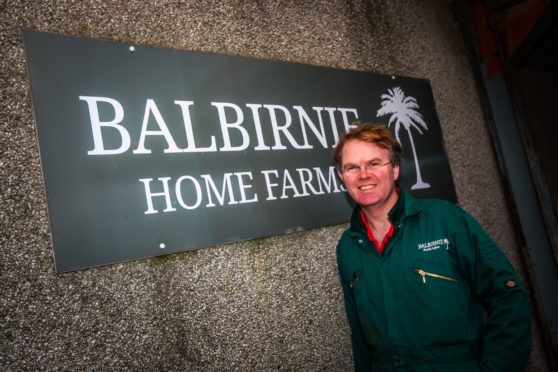Arable growers in Angus and Fife are at the heart of new cereals research which could lead to improved yields and more environmentally friendly farming.
Next year’s AHDB strategic farm trials will focus on pest, weed and disease prevention using integrated pest management (IPM), with producers – including David Aglen at Balbirnie in Fife – also looking at how cover cropping, cultivation and marginal land can improve the farmed environment.
In Angus, two growers from Farming for a Better Climate’s soil regenerative agriculture group are looking at analysing grain nutrient levels as another measurement to maximise yields, suggesting that a grain “post-mortem” could become a handy nutrient management tool.
Balbirnie joined the AHDB’s strategic farm network this year, and Mr Aglen says his priority is to understand the relationship between plant health and disease through tissue tests.
The farm will also carry out soil baselining using AHDB’s soil health scorecard to understand its biological, chemical and physical status.
The strategic farms across the UK are also investigating how to reduce pesticide use by testing fungicide application timings and monitoring beneficial invertebrates and natural enemies in flower-rich grass margins and the surrounding crop.
Meanwhile, independent consultancy ADAS has identified that grain analysis – usually restricted to identifying crop quality and suitability for malting or milling – can also assess what the plant has achieved which could provide accurate nutrient offtakes and allow them to be cross checked with soil analysis.
Peter Lindsay, one of the group facilitators from SAC Consulting, said it was another tool in the box to identify the limiting factors for yield.
“Farmers are good at looking at yield from the front end with soil and leaf tissue analysis, but these are not a perfect replication of what nutrients are being accessed,” he said.
“The grain nutrient analysis gives an overview of the whole growing season and shows whether a crop actually captured enough of each nutrient throughout its entire life.”
Over a few years, he says this process can identify nutrient shortfalls across the farm which can be addressed to maximise future returns.
“This could mean being more targeted with fertiliser, reducing costs where uptake is good, and focusing on soil health in fields where nutrients seem to be lacking,” he said.
“Nutrient-rich crops are healthier and more resistant to disease so it’s a fundamentally valuable asset especially as farmers look to create pre-subsidy profit.”
When Hugh Black at Backboath Farm near Carmyllie, analysed a crop of wheat and a crop of spring barley, he found that the phosphorus in both was less than required.
He said: “Although we achieved the best yields we ever have for our wheat crop, this grain analysis identifies that there is still room for improvement as the plants have not been able to access as much P as they need, whether that is in our nutrient or soil management.”
Ben Barron at Leitfie Farms also analysed one of his wheat crops and found that although he achieved optimal status for his manganese, the grain analysis has shown that the plant did not have enough nitrogen, phosphorus and sulphur.
